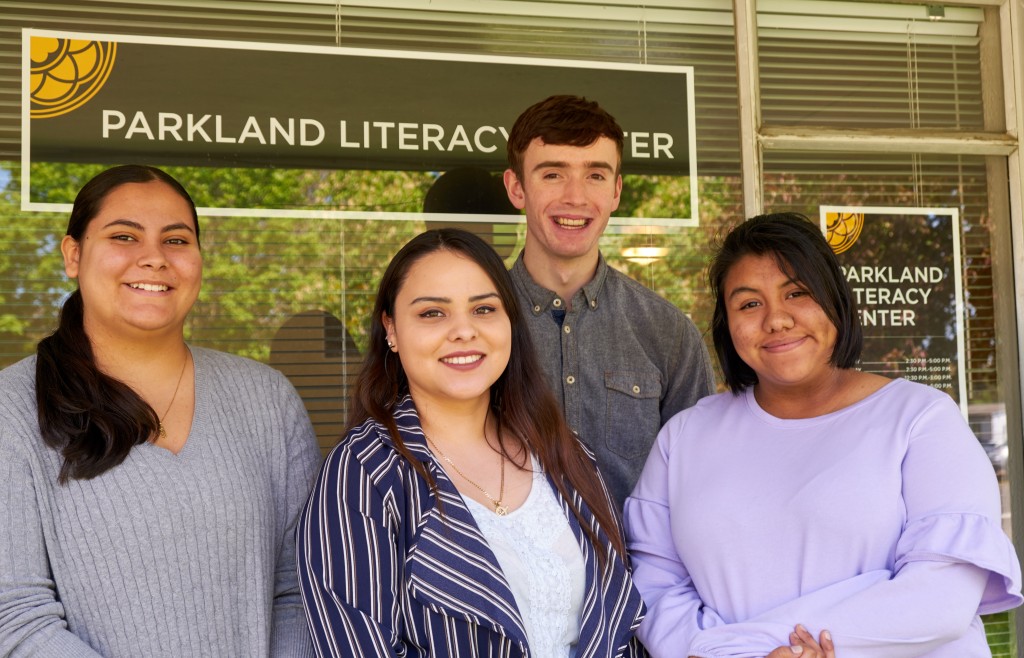Page 3 • (45 results in 0.039 seconds)
-
News for Pacific Lutheran University.
Dept of Energy Computational Science Graduate Fellowship Computational science is interdisciplinary by nature, using algorithms, mathematics and computers to analyze and solve scientific and engineering problems. The DOE CSGF’s unique program of study helps nurture this crosscutting foundation. The result: scientists who may reside in science, mathematics, engineering or computer science departments… October 30, 2024 Opportunity Blog
-
Opportunity Blog news for Pacific Lutheran University.
Dept of Energy Computational Science Graduate Fellowship Computational science is interdisciplinary by nature, using algorithms, mathematics and computers to analyze and solve scientific and engineering problems. The DOE CSGF’s unique program of study helps nurture this crosscutting foundation. The result: scientists who may reside in science, mathematics, engineering or computer science departments… October 30, 2024 Opportunity Blog
-
News for Pacific Lutheran University.
Dept of Energy Computational Science Graduate Fellowship Computational science is interdisciplinary by nature, using algorithms, mathematics and computers to analyze and solve scientific and engineering problems. The DOE CSGF’s unique program of study helps nurture this crosscutting foundation. The result: scientists who may reside in science, mathematics, engineering or computer science departments… October 30, 2024
-
News for Pacific Lutheran University.
Dept of Energy Computational Science Graduate Fellowship Computational science is interdisciplinary by nature, using algorithms, mathematics and computers to analyze and solve scientific and engineering problems. The DOE CSGF’s unique program of study helps nurture this crosscutting foundation. The result: scientists who may reside in science, mathematics, engineering or computer science departments… October 30, 2024
-
News for Pacific Lutheran University.
Dept of Energy Computational Science Graduate Fellowship Computational science is interdisciplinary by nature, using algorithms, mathematics and computers to analyze and solve scientific and engineering problems. The DOE CSGF’s unique program of study helps nurture this crosscutting foundation. The result: scientists who may reside in science, mathematics, engineering or computer science departments… October 30, 2024
-
Join the Computer Science Department to hear the senior capstone presentations. Student presentations will take place Friday and Saturday. All talks are scheduled in Morken 203.
through digitizing the analog input signals. These digital signals are then shaped by digital signal processing algorithms whose parameters are determined by user input. The whole process occurs on a 32-bit ARM microprocessor. The resultant signal is then converted back to analog to be used by an external system of the user’s choice. 3:30 Break 3:45pm – Swarm Engine: Parallel Programming Game Engine James DeBroeck (BSCE, BSCS) Swarm Engine is a C++ library used in game and simulation development, with
-

The Parkland Literacy Center (PLC), created in 2018 by English Writing Professor Scott Rogers and Hispanic Studies Professor Bridget Yaden, is located on the western edge of PLU’s campus. The PLC, as it’s called, offers after-school tutoring in all academic subjects to Keithley Middle School…
staff to draw on the interdisciplinarity emphasized throughout their PLU education. Tutors sometimes work in their areas of expertise, but they also regularly step outside their comfort zone to help with subjects that might not be quite so familiar to them. On any given day, PLC staff may be balancing out formulas or helping students write essays. For example, Nick, an English Writing and Hispanic Studies major who aspires to be a poet, helps students understand algebraic equations, too. The beauty
-

Lindsey Clark ’24 came to PLU knowing it was where she wanted to be. But Clark—a double major in mathematics and gender, sexuality, and race studies (GSRS)—says PLU challenged and changed her and expanded her worldview in ways she never before considered on her way…
PLUContemporary mathematics has played an integral role in the development of computer technologies, search algorithms, financial investing strategies, physical models of nature, fair redistricting voting models, and more.Clark says part the value of the CS-STEM program is meeting with PLU grad students in the Masters of Arts in Education Program. “I get to hear their experiences—the good, the bad, and the horrendous. It’s nice to share a space with other people who are also passionate about changing how we
-

Professor Emeritus Bryan Dorner passed away on Sunday, May 19, 2024. Beloved by his students and peers alike, Bryan joined the Department of Mathematics in 1980 and retired in 2017. He earned tenure in 1986 and was promoted to full professor in 2004. “Bryan truly…
, colleagues say, was a successful grant that brought in money to build a computer laboratory for use in teaching calculus. Bryan’s interest in ancient mathematics led him to new algorithms for computing sines, cosines, and roots (square roots, cube roots, fourth roots, etc.). He incorporated these investigations into his courses and published his work in journals of the National Council for Teachers of Mathematics and the American Math Society. Bryan worked with his wife Celine Dorner – also an emeritus
-

Lindsey Clark ’24 came to PLU knowing it was where she wanted to be. But Clark—a double major in mathematics and gender, sexuality, and race studies (GSRS)—says PLU challenged and changed her and expanded her worldview in ways she never before considered on her way…
.”Study mathematics at PLUContemporary mathematics has played an integral role in the development of computer technologies, search algorithms, financial investing strategies, physical models of nature, fair redistricting voting models, and more.Among her favorite student experiences was a math festival where PLU partnered with University of Washington Tacoma students, bringing the event to both universities and Lincoln High School in Tacoma. “The goal was to bring mathematics in new, fun, and
Do you have any feedback for us? If so, feel free to use our Feedback Form.


